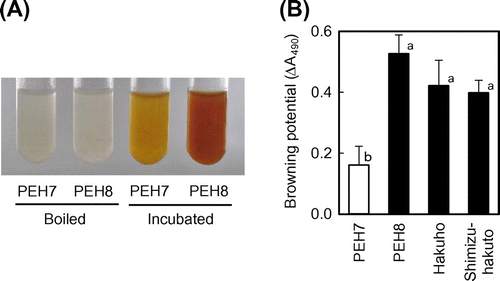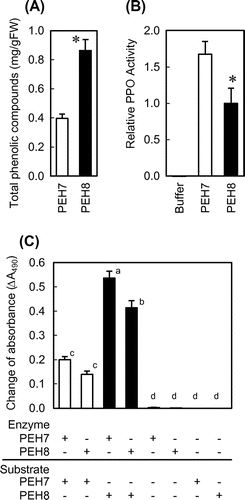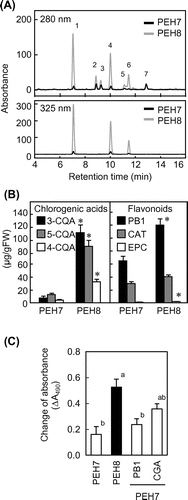Figures & data

Fig. 1. Reduced browning phenotype in flesh homogenate of Okayama PEH7.

Table 1. Color values of flesh homogenate prepared from Japanese peach cultivars.
Fig. 2. Comparison of phenolic compounds and PPO activity between Okayama PEH7 and Okayama PEH8.

Fig. 3. Analysis of phenolic compounds in fruit flesh.

